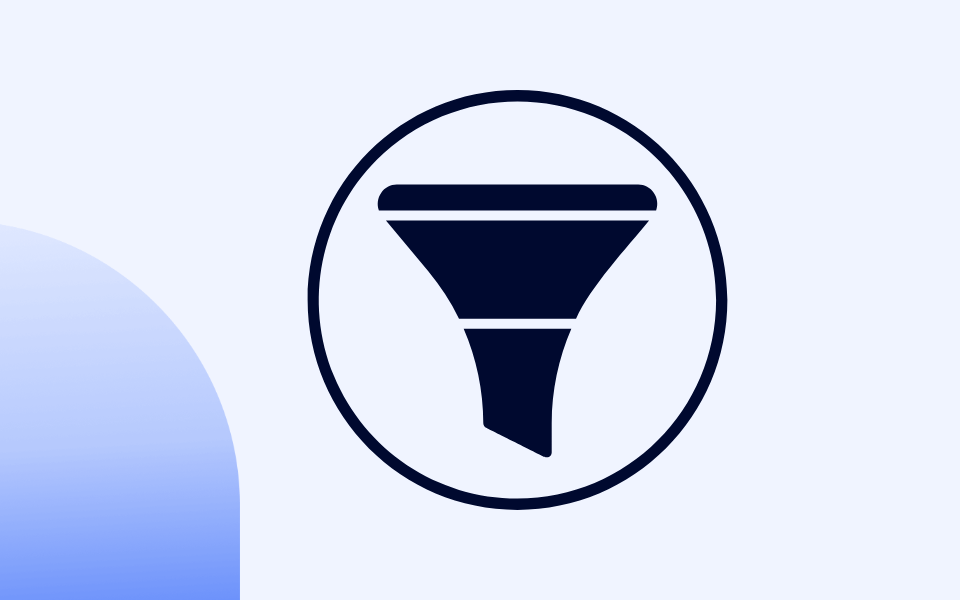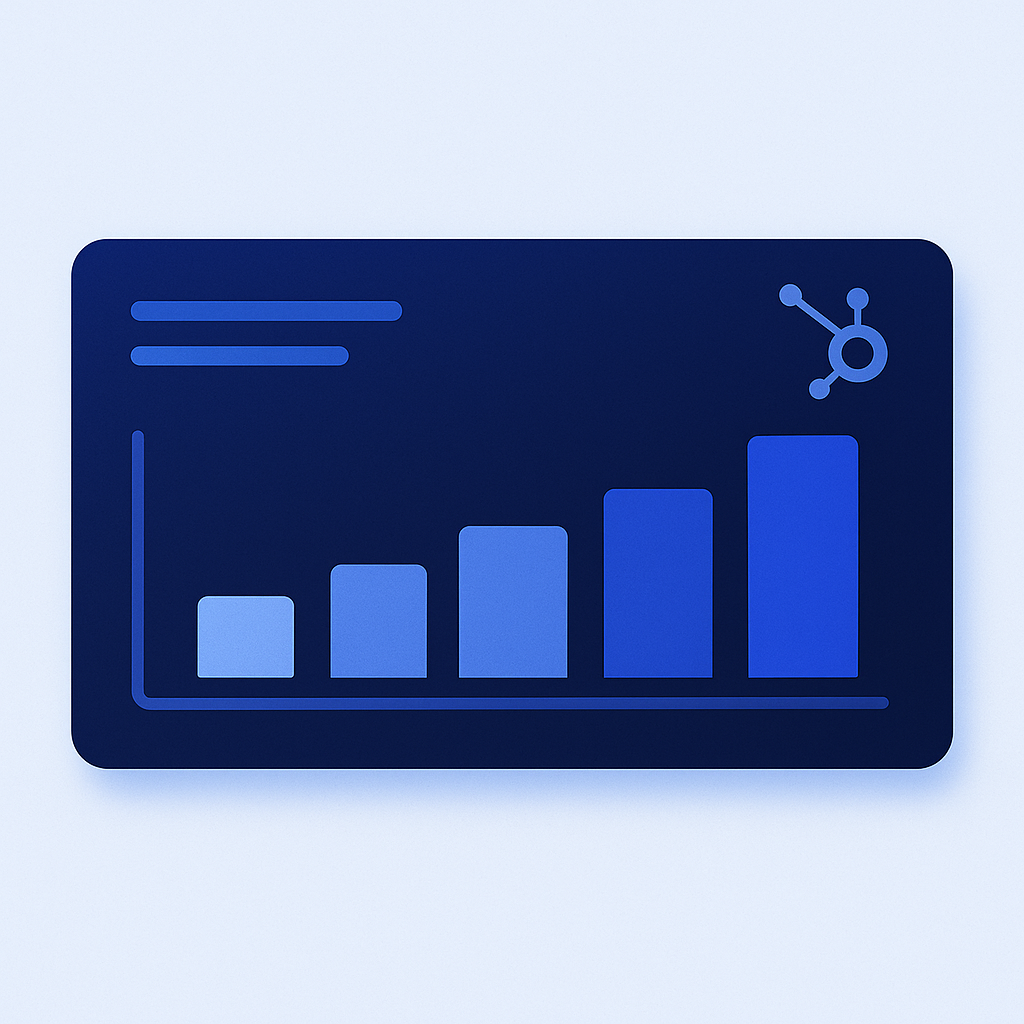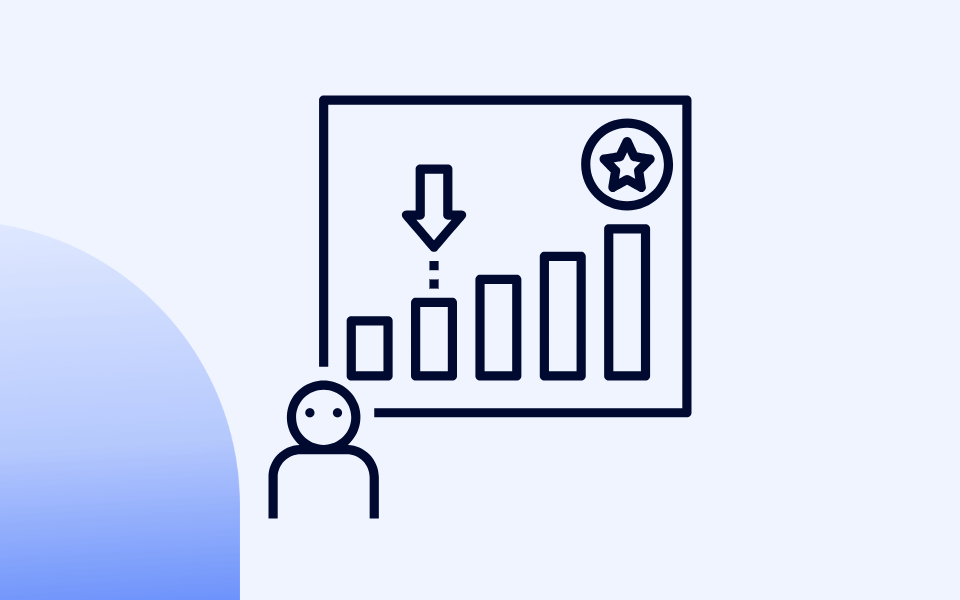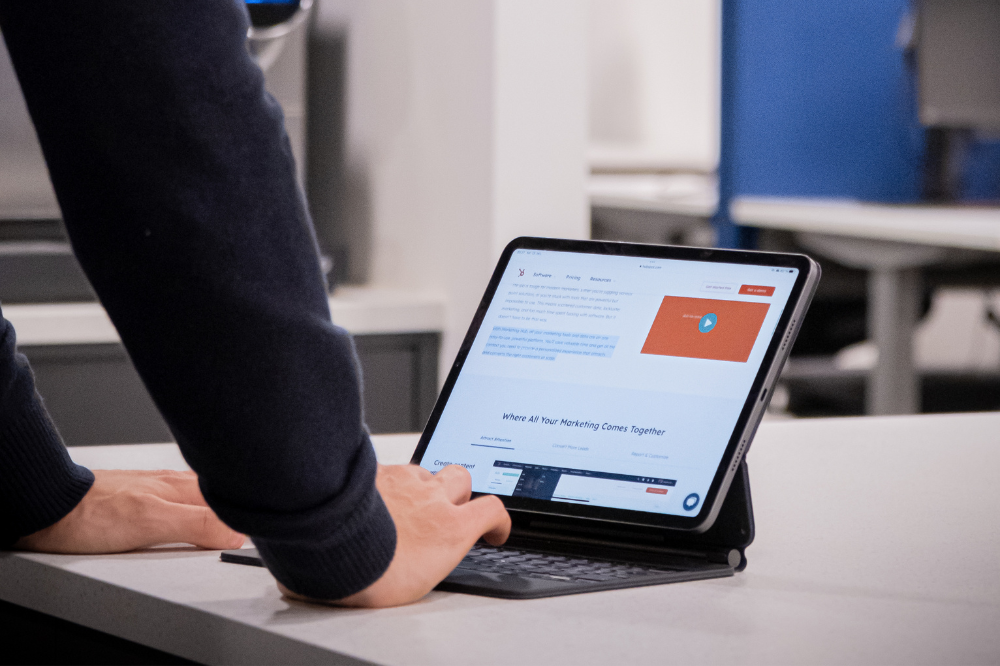How to Build a Predictable Sales Process in HubSpot for Maritime Tech Companies
HubSpot Lead Nurturing: Lifecycle Stages, Lead Status, and Buying Roles

Most marketers don't realize they're segmenting leads incorrectly in HubSpot.
You might generate new contacts by running campaigns, but there is no system for segmenting them and moving them toward buying your solution.
Sales and marketing disagree on when a lead is ready, sales reps waste time on the wrong prospects, and too many leads go unattended.
The issue isn’t your leads—it’s your lifecycle management.
Without clear definitions and automation, knowing which leads are ready to buy (and which aren’t) is a guessing game that can cost you valuable sales opportunities and revenue.
That’s where HubSpot’s lifecycle stages, lead status, and automation tools can drastically improve how businesses manage their leads and sales processes.
In this guide, you’ll learn how to:
-
Define and automate lifecycle stages for seamless handoffs.
-
Use lead status to track sales engagement more effectively.
-
Align lifecycle stages with buyer roles and your Ideal Customer Profile (ICP).
-
Automate nurturing and lead scoring to keep leads engaged and moving forward.
By the end, you’ll have a structured system that keeps your pipeline flowing and ensures leads never get lost again.
What Are Lifecycle Stages in HubSpot?
Have you ever struggled to determine where a contact stands in your sales process?
Without a structured system to move contacts through their buying process, valuable leads are not followed up, and marketing and sales can become out of sync.
You will also need lifecycle stages to hand off new customers to your customer success teams, who must ensure that customers are happy and provide testimonials and case studies.
That’s why lifecycle stages exist in HubSpot.
Lifecycle stages help you categorize your contacts based on their proximity to buying, so you always know who needs nurturing, who is ready for sales, and who is already a customer.

HubSpot provides seven default lifecycle stages that map out the typical buyer journey.
Here’s how they work:
-
Subscriber → Someone signed up for your blog, newsletter, or other content. They’re interested in what you say (your content) but aren’t ready to buy.
-
Lead → A contact who has engaged beyond just subscribing—maybe they filled out a form or downloaded a whitepaper. They’ve shown some interest but still need nurturing.
-
Marketing Qualified Lead (MQL) → A lead who has met specific criteria (like lead scoring or engagement levels) that indicate they’re ready to be passed to sales.
-
Sales Qualified Lead (SQL) → A lead that the sales team has vetted and agreed is worth pursuing. This usually means a rep has contacted them and confirmed interest.
-
Opportunity → A contact associated with an active deal in your pipeline. They’ve moved beyond a simple conversation and are considering a purchase.
-
Customer → A contact with at least one closed-won deal—they’ve officially bought from you.
-
Evangelist → A happy customer who promotes your brand through referrals, reviews, or testimonials.
Here’s how to make sure leads move through your lifecycle stages the right way:
1. Be clear on when a lead moves forward
Set specific criteria for each stage. For example, an MQL isn’t just anyone filling out a form—they might need to come from a specific industry and have taken certain actions on your website.
2. Let automation do the heavy lifting
Use workflows to move leads forward automatically. If someone books a demo and a deal is created, they should instantly transition to an Opportunity—no manual updates needed.

Using HubSpot, you can set up automatic rules using workflows to set the lifecycle stage based on the contact information and behavior of each contact in the CRM.
3. Never move leads backward
Instead of resetting lifecycle stages, use lead status like “Bad timing” or “Nurturing” to track past interactions. This will keep your data accurate while still tracking re-engaged leads.
Let’s say a Senior Engineer, Sarah, signs up for your webinar.
She becomes a Lead because she’s taken action beyond just visiting your website.
After attending the webinar, she engages with follow-up emails and reads a case study that meets your MQL criteria. Marketing passes her to sales for further qualification.
A sales rep reaches out, has a discovery call, and confirms she’s a good fit. She’s now an SQL and moves into the sales pipeline.
Sarah requests a proposal, and a deal is created—moving her to the Opportunity stage.
She signs the contract—now she’s a Customer!
Sarah finds so much value in your service that she gives you high customer satisfaction scores.
She accepts being featured in a case study and later refers a colleague at another company, so you mark her as an Evangelist.
Following these structured stages will ensure that your team knows exactly where each lead stands, preventing opportunities from being overlooked.
What is the Lead status in HubSpot?
Lead Status in HubSpot helps sales teams track a contact’s progress after they’ve been qualified as a potential customer.
While Lifecycle Stages define significant milestones (e.g., Subscriber → MQL → SQL → Customer), Lead Status provides a more granular view of what’s happening within the sales process.
Think of it like this:
The lifecycle Stage is the big-picture category (MQL, SQL, Opportunity, etc.), helping you understand a lead’s overall position in your sales process.
Lead Status is a sub-layer within the SQL stage, showing how far along a rep works the lead.
For example, two contacts might be SQLs, but one has never responded to outreach, while the other just completed a discovery call and is associated with a deal in your pipeline.
That’s why tracking Lead Status separately is so helpful.
HubSpot provides seven default Lead Status options, which you can customize based on your sales process. Here’s what each one means and when to use it:
-
New → The lead just became an SQL and hasn’t been contacted yet.
-
Open → The lead has not been assigned to a sales rep yet.
-
In Progress → Sales is actively working the lead—sending emails, making calls, and scheduling meetings.
-
Attempted to Contact → The rep has tried to reach the lead but hasn’t received a response yet.
-
Connected → The rep has successfully made contact, but the lead hasn’t fully committed to moving forward.
-
Open Deal → A deal has been created for this lead in HubSpot.
-
Unqualified → The lead isn’t a good fit and won’t be pursued further.
This system gives sales an easy way to sort and prioritize leads.
For example, a rep can use Views in HubSpot to filter their new or attempted contact leads and focus on immediate follow-ups. Connected leads might need more nurturing.
A common mistake in sales teams is treating all SQLs the same.
But if you’re managing hundreds (or thousands) of leads, you need a way to prioritize:
 Let’s say your sales team has 50 SQLs and Opportunities they are working:
Let’s say your sales team has 50 SQLs and Opportunities they are working:
-
10 are New and haven’t been contacted yet.
-
20 are Attempted to Contact and need follow-up.
-
15 are Connected but need further qualification.
-
5 are Open Deals and are actively in the pipeline.
Without Lead Status, all of these leads would look the same in the CRM.
However, with Lead Status, your reps can quickly identify which leads require immediate attention, which require follow-ups, and which are already progressing towards becoming customers.
Instead of manually updating Lead Status for every contact, you can use HubSpot workflows to streamline the process.
You can create workflows to move leads to Attempted to Contact after calls, Connected when they reply, and Open Deal when a deal is created.
Automating these updates lets your sales team focus on better outreach, talking to prospects, and closing deals instead of managing CRM data.
This dual tracking system keeps sales and marketing aligned, ensuring everyone knows where a lead stands without messing up historical data.
Aligning Lifecycle Stages with Your Ideal Customer Profile (ICP)
Ever passed a lead to sales, only to hear, “This isn’t the right person”?
It happens all the time when lifecycle stages aren’t aligned with buyer roles and your Ideal Customer Profile (ICP).
Even if someone engages with your content, they may not be a decision-maker or have the right company fit for your business.
That’s why it’s crucial to map lifecycle stages to who your buyers are and how they make decisions.
Step 1: Define Your Ideal Customer Profile (ICP)
Your ICP describes the companies that best fit your product or service.
You should define it based on criteria such as:
-
Pain points → (e.g., why they buy a solution like yours)
-
Industry → (e.g., maritime technology companies, SaaS firms)
-
Company size → (e.g., 50-500 employees)
-
Revenue range → (e.g., $10M–$50M ARR)
-
Tech stack → (e.g., HubSpot, Salesforce, or specific tools they should use)
-
Geography → (if location matters for your business)
Once you define your ICP, you’ll know which companies you want in your CRM. But what about contacts? That’s where buyer roles come in.
Step 2: Identify Key Buyer Roles in B2B Sales
In complex B2B sales, decisions aren’t made by one person.
There’s a buying committee with different roles—each affecting the deal in their own way.

Here are the most common buyer roles you’ll encounter:
-
Decision-Maker → The person with final approval (e.g., CEO, VP of Sales).
-
Champion → An internal advocate pushing for your solution.
-
Influencer → Someone who provides input but doesn’t decide (e.g., IT director).
-
End User → The person who will use your product (e.g., a marketing manager for a CRM).
-
Budget Holder → The person who controls spending (e.g., CFO, procurement).
-
Executive Sponsor → The high-level stakeholder who supports the purchase and ensures it aligns with company goals (e.g., a CEO or VP who approves the budget for a CRM).
-
Legal & Compliance → The team responsible for reviewing contracts, terms, and risks before the deal can be finalized.
If you’re only talking to an Influencer, but the Decision-Maker hasn’t been engaged, your deal is at risk of not closing.
Step 3: Assign Buyer Roles in HubSpot CRM
HubSpot has a Buying Role property, which lets you tag contacts by their role in the decision process.
To apply this, add the Buying Role property to all SQLs and Opportunities and ask qualifying questions during discovery calls, such as “Who else is involved in this decision?”

Update the contact’s buying role in HubSpot (e.g., “Decision-Maker” or “Champion”) and use filters to ensure every opportunity has a decision-maker assigned.
If an Opportunity doesn’t have a Decision-Maker tagged, sales should work to engage one before progressing further.
The deal won't move forward if sales talk to the wrong person.
Every deal needs to involve the Decision-Maker. At least one Decision-Maker or Budget Holder should be assigned to every opportunity.
Workflow Strategies in HubSpot
Are you managing leads manually?
That’s a recipe for slow response times, missed follow-ups, and wasted effort.
HubSpot’s workflows and automation tools help you move leads through lifecycle stages efficiently—without manual data entry or guesswork.
Let’s break down the key automation strategies that keep your pipeline flowing smoothly.
1. Automating Lifecycle Stage Progression
Manually updating lifecycle stages is inefficient and prone to errors. Instead, use HubSpot Workflows to automate lead movement based on engagement and actions.
If a contact converts on a high-intent asset (like a webinar), enroll them in a workflow. If their Lead Score is above 50, automatically update them to MQL.
If they meet your SQL criteria (e.g., requested a demo), notify the sales team.
When a rep books a discovery call and the contact meets your qualification criteria, create a deal in the sales pipeline, automatically setting the lifecycle stage to Opportunity.
This workflow ensures that MQLs, SQLs, and Opportunities are tracked consistently without manual intervention.
2. Lead Nurturing Sequences That Move MQLs to SQLs
Not every lead is ready for sales the moment they engage.
That’s why lead nurturing workflows are critical. They warm up leads over time so that when sales contact them, the lead is primed for conversion.
A typical MQL nurturing sequence in HubSpot might look like this:
-
Day 1 → Thank-you email with a helpful resource related to their download/registration.
-
Day 4 → Follow-up email with a case study relevant to their industry.
-
Day 10 → Email addressing a common pain point and offering a free consultation.
-
Day 15 → Personalized email from a sales rep asking if they have any questions.
If a lead engages with multiple emails or reaches a specific lead score, HubSpot can automatically update its lifecycle stage to SQL, ensuring only warm leads are passed to sales.
3. Follow-Up Workflows for Stalled Leads & Opportunities
Some leads go cold. But instead of losing them forever, use automation to re-engage them.
Example: A “Re-engagement Workflow” for cold SQLs
-
Trigger → If an SQL hasn’t engaged in 30 days, enroll them in a workflow.
-
First Touch → Send an email with a valuable piece of content or a relevant industry update.
-
Check Engagement → If they open/click, notify a rep for follow-up.
-
Second Touch → If no response in 10 days, send a second email with a different angle (e.g., an exclusive offer).
-
Final Touch → If still no response, mark as Recycled Lead and move back into long-term nurturing.
A similar workflow can automatically remind sales to follow up at key points in stalled deals, ensuring that opportunities do not slip away.
4. Automating Internal Notifications & Task Assignments
To keep teams aligned, use HubSpot’s automation to send real-time notifications when key events happen.
-
New MQL Alert → When a lead becomes MQL, notify the assigned sales rep via email or Slack.
-
SQL Follow-Up Task → If an SQL hasn’t been contacted within 24 hours, create a task for the rep.
-
Deal Milestone Alerts → When a deal progresses (e.g., from “Proposal Sent” to “Negotiation”), send an internal update.
By automating notifications, sales stays proactive instead of reactive.
Advanced Applications – Ads, Lead Scoring, and Nurturing
Once you’ve structured your lifecycle stages and automated the handoff between marketing and sales, optimizing your pipeline using ads, lead scoring, and personalized nurturing is time.
These advanced tactics help you engage the right leads at the right time—without wasting resources on low-intent prospects.
1. Lifecycle Stages & Paid Advertising: Targeting the Right Leads
Most B2B marketers use LinkedIn, Facebook, and Google Ads to drive traffic, but few optimize their ads based on lifecycle stage data.
Instead of treating all leads the same, HubSpot lets you sync your lifecycle stages with ad audiences for precise targeting.
Sync your HubSpot company and contact lists with LinkedIn Ads to retarget prospects with relevant case studies or demo offers.
For SQLs further along in your sales process, use targeted, high-intent ads, like "Book a Consultation" or "See Pricing," to nudge them toward making a decision.
Finally, exclude existing customers from your lead-gen ads to prevent wasted budget, ensuring you're only paying to reach new prospects, not contacts who have already converted.
By dynamically updating your ad audiences based on lifecycle stage, you ensure leads see the right message at the right time.
2. Email & Content Nurturing: Personalizing the Buyer Journey
The more personalized your emails and content are, the more likely leads will engage.
HubSpot allows you to use dynamic content and smart CTAs to adapt messaging based on the the lifecycle stage, ensuring that each lead gets a relevant experience.
Smart personalization tailors your content based on the buyer’s lifecycle stage. For MQLs, you might show CTAs highlighting relevant case studies or industry reports.
As leads become SQLs, switch your CTAs to free trials or product demos.
Once they're Opportunities, offer special pricing deals or easy-to-use proposal templates to encourage final conversions.
You increase engagement rates by segmenting nurture flows based on lifecycle stages while avoiding irrelevant messaging.
3. Lead Scoring & Automation Alignment: Prioritizing High-Intent Leads
Not all your leads deserve sales attention. That’s where lead scoring helps.
HubSpot’s lead scoring model assigns points based on engagement level, company fit, and buying signals, so you can only pass sales-ready leads to the team.
To identify interested leads faster, assign points based on positive engagement: give +10 points when a lead downloads a pricing guide, +5 points after opening three or more emails, and +20 points when they request a demo.
Deduct points for signs of low intent or inactivity: subtract -10 points if a lead hasn't engaged in over 30 days and -20 points for an email bounce.
Once a lead reaches 60 points, automatically move them to SQL status and notify the sales team for immediate follow-up.
With lead scoring automation, sales teams focus only on the highest-quality leads—improving efficiency and conversion rates.
Turn Your Lifecycle Stages Into a Revenue Engine
Managing lifecycle stages in HubSpot isn’t just about keeping your CRM organized. It’s about ensuring every lead moves smoothly through your funnel so no opportunity is wasted.
When your lifecycle stages are structured correctly, automated handoffs are in place, and marketing and sales are aligned, several key benefits emerge:
-
Marketing sends only sales-ready MQLs rather than unqualified leads.
-
Sales teams focus exclusively on high-intent SQLs, improving conversion rates.
-
Clear reporting highlights friction points, enabling continuous improvement.
Optimizing your lead flow involves several critical steps:
First, audit your current lifecycle stages. Confirm that your definitions of MQLs and SQLs are based on real buying signals—not just assumptions or guesses.
Second, automate lead handoffs. Use workflows that advance leads based on tangible engagement rather than gut feelings or manual interventions.
Third, align your marketing and sales teams. Both departments should agree on what constitutes a sales-ready lead, ensuring smooth transitions and fewer misunderstandings.
Fourth, implement lead scoring. This allows your sales team to prioritize prospects with the highest intent, increasing efficiency and the likelihood of conversions.
Finally, consistently track performance and optimize your process. Leverage HubSpot’s built-in reporting tools to analyze your pipeline regularly, identify bottlenecks, and refine your approach.
Following these steps transforms your lifecycle management from merely administrative to a predictable, revenue-generating system.
Your next action is to examine your MQL-to-SQL conversion rates closely. This single metric can quickly highlight where your pipeline needs the most attention.


